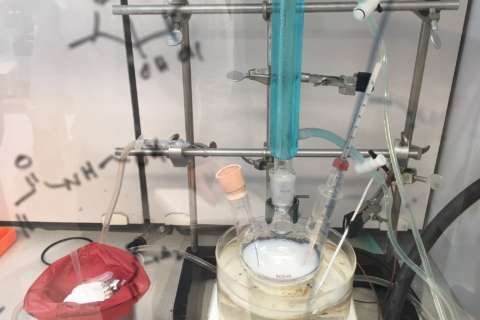On a long enough timeline, football’s future is uncertain. Mounting lawsuits over crippling, long-term injury issues threaten the sustainability of the sport, as the science behind them discovers more and more about the damage even routine contact can do to brains.
So what can be done in the short term, right now, to limit that exposure, particularly for amateur athletes, many of them still kids?
That’s what Terry O’Neil has made his mission over the last six years. But he’s the first to admit that his initial efforts, while well-intentioned, foundered.
“We flopped around for the first two or three years trying to figure out what to do,” he told WTOP at the recent Derek Sheely Conference at George Washington University, which focused on reducing catastrophic injuries, particularly in football. “I really got nothing done. I wasted so many peoples’ time.”
He needed a change in approach.
“What we really needed to do was change regulations state by state, because football in high school is governed state by state.”
O’Neil and his group, Practice Like Pros, hit their breakthrough in February. The New Jersey State Interscholastic Athletic Association adopted their guidelines for the upcoming season, an action that gained the attention of The New York Times.
Those guidelines are as follows: Limit contact to 15 minutes per week during practice in the regular season, and to six hours total in preseason. The numbers aren’t arbitrary. They were the result of conversations with many former players and coaches, including a number of NFL alumni, hence the name of the program.
But it took a breakthrough moment to bring New Jersey on board. O’Neil brought along former NFL coaches Brian Billick and Dick Vermeil for presentations, but at a January meeting with coaches at the Hale Center at Rutgers, some were still pushing for a higher limit for contact during practice. That’s when Drew Gibbs, head coach at Ramapo High School — who had just navigated a perfect 13-0, state title-winning season — told those assembled that his team hadn’t had any tackling in-season during that campaign.
“All the air sucked out of that room for a second and everybody said, ‘I guess 15 is plenty,’” said O’Neil.
Getting coaches on board as allies makes things a lot easier when it comes to convincing state governing bodies, which is why coaches have been the focus for O’Neil.
“Whenever you go to a governing body and say, ‘The coaches endorse this,’ the governing body says, ‘Who are we to stand in the way?’”
This weekend, Practice Like Pros will announce that Michigan will become the second state to adopt the guidelines, reducing full contact limits from 90 minutes per day to 30, and preseason contact from three hours per day not including scrimmages to six hours per week including scrimmages.
O’Neil says his organization is engaged with a dozen different states around the country right now, but that D.C., Maryland and Virginia are not yet among them. It would help if he had a local advocate to further his message, as he has leaned on in other states he’s working with: Archie Manning in Mississippi, Cornelius Bennett in Alabama, Leonard Marshall in Louisiana.
For those looking for more definitive progress from such a program, the University of Wisconsin published results from the state’s own reduction in contact time in practices back in 2015. Those contact reduction guidelines limited full contact to 60 minutes per week from the third week of the season on, leading to a more than 50% drop in concussion rate. The quote from the Chair of the National Federation of State High School Associations is meant to be qualifying, but ends up presenting as something of an a-ha statement of clarity for O’Neil.
“Clearly, if there’s less opportunity for injury as a result of limiting total contact time, we will see less concussions, as well as other injuries,” said Dr. Michael Koester from the Slocum Center for Orthopedics & Sports Medicine.
At Dartmouth, head coach Buddy Teevans has eliminated player tackling entirely from practice, leading the way in the Ivy League. The league as a whole changed kickoff rules to help curb brain injuries to notable effect, but Teevans’ system has yet to catch on across the college ranks, despite success on the field (the Big Green were 9-1 last year).
O’Neil hopes that influencing more high school governing bodies to curb contact limits will filter up. With successful coaches like Randy Trivers from Gonzaga College High School — which won the WCAC title in one of the wildest high school football games ever — already following similar guidelines, O’Neil is confident he can navigate the various public/private/charter nuances of our local municipalities to create a safer environment for high school football everywhere.
He’s also working on getting a study funded for the first year in New Jersey, to mine hard data to use for other states. He’s working with Dr. Anil Nanda, head of neurosurgery at Rutgers, to run the study. While it hasn’t been funded yet, O’Neil is confident, as he is in all his endeavors, that it will be in due time.
“It won’t deter us,” said O’Neil of the groundwork needed. “We’re going to find coaches that are willing to rally with us.”







